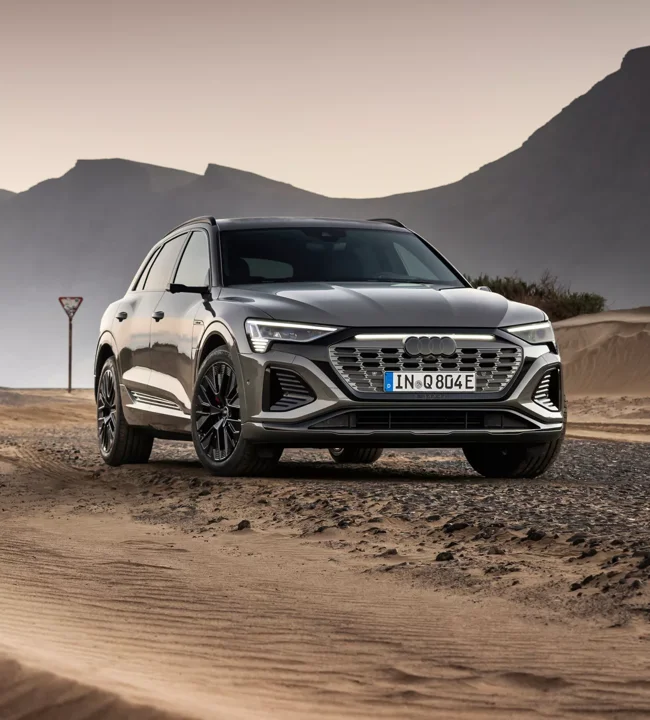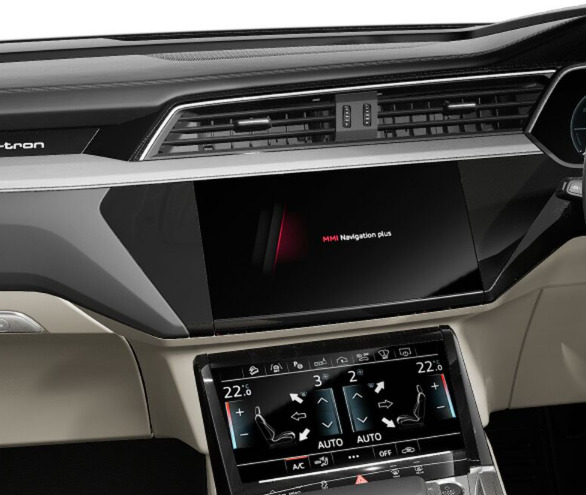What is the battery capacity of the Audi e-tron Sportback?
The Audi e-tron Sportback features a battery capacity of approximately 95 kWh, supporting its performance and range.

Fuel type
Electric
Certified range
484 - 484 km
Transmission
Automatic
Battery Capacity
0.095 kWh
Seat capacity
5 seater
Available colours
9 colours









Charging Time
56 mins
Battery Type
Lithium-ion

Infotainment System Display Touch Sensitive

Wheels Alloy

Headlights LED

Instrument Cluster Digital
The Audi e-tron Sportback features a battery capacity of approximately 95 kWh, supporting its performance and range.
The e-tron Sportback offers a WLTP-claimed range of around 484 km on a full charge.
Key features include a 10.1-inch touchscreen infotainment system, a digital instrument cluster, and Android Auto and Apple CarPlay support.
The e-tron Sportback has a ground clearance of 226 mm, suitable for handling various road conditions.
It includes adaptive cruise control, lane-keeping assist, automatic emergency braking, and a comprehensive airbag system.
Discover. Decide. Drive.
Explore at your pace, with expert recommendations if needed. Finalise and book your car at the best price.
Financing the right way
Access the best loan options with hassle-free, paperless financing.
Prepare to drive
Schedule delivery for your special day and track updates effortlessly.Schedule delivery for your special day and track updates effortlessly.